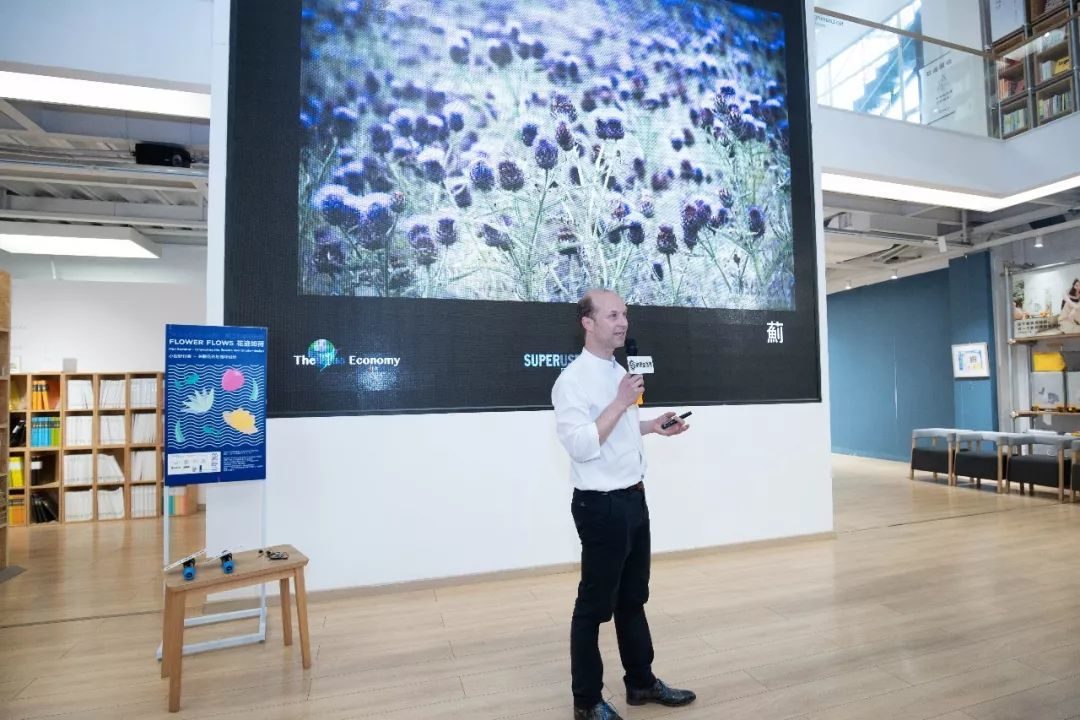Flower Flows - Research into the Dutch and Chinese flower industry
The Dutch Consulate in Guangzhou invited Superuse, architecture agency and teachers of the
Superuse integrated this research into the 2018-2019 programme Flows of INSIDE, in which students researched and mapped the Dutch flower industry. At the same time, Master students of the Minzu University of China, in Beijing developed a Flows map of the Chinese flower industry. The Flower Flows project was presented at the Dutch Days 2019 in May, in Guangzhou, China.
Flow mapping
Superuse recently introduced a platform to visualize the system of Flows to China. This platform maps and shows the system of Flows in the industrial park by visualising the input and output of material and energy of each factory in the area. They realised this platform for the Zhaoqing High Tech Industrial Park in the Guangdong Province, in the south of China. This visualisation creates awareness by the companies and local government about the relationship between the production and the various kinds of waste that production entails. Thus providing the knowledge to support the engineering of the waste not being dumped but to be renewed as resource.
Flower production compared: The Netherlands-China
The Flower Flows map shows the physical flows, energy flows and flows of value in the tulip industry in the Netherlands and the rose production in the Netherlands and China. The Dutch situation was researched by the INSIDE students led by Devina Amelia. The situation in the Netherlands turned out to be much easier to map than the Chinese one. The cooperative interest group for the flower industry, Royal Flora Holland, provides detailed annual figures, while Chinese flower production is largely carried out by small family businesses. The Chinese flower production is in scale and efficiency incomparable to the Dutch flower industry. In the Netherlands 95% of the produced flowers are transported to central auctions where in China this system of protected transportation is largely absent.
The mapping process revealed various exceptional facts about the flower industry, in the field of finance, labour, waste and energy.
The InsideFlows approach to spatial design aims for a 'systemic' understanding of our environment thus enabling resource flows to give a positive contribution to design by delivering innovative and sustainable solutions. Flows is a crucial tool for 'engineering' the ambitions of sustainability and circularity, which are indispensable for the future of our built environment.
The Flows approach does not create a hierarchy in complex spatial situations but focusses on the complex system itself that lies underneath every spatial situation. In het systemic approach InsideFlows distinguishes three sections of flows: physical flows, energy flows and flows of value, and determines 14 different subcategories within these sections. Flows helps designers reasoning the reality and understanding the world not through simplification and isolation, but through establishing a 'systemic view' of our environment. By mapping the dynamic and complex relationships of the designated flows, designers are capable to maneuver and understand the numerous layers involved and their connections and finally bring these together to the core of their design process. Flows thus not only manifests itself in the research phase of a project. By applying the Flows approach also to design, designers are able to include numerous and even elusive elements in their design and unexpected opportunities pop up and are discovered that can lead to a new aesthetics.
InsideFlows was originally developed by Jan Jongert of the Rotterdam based architecture office Superuse Studios. Since 2017 the Flows programme is further developed by alumna INSIDE student
